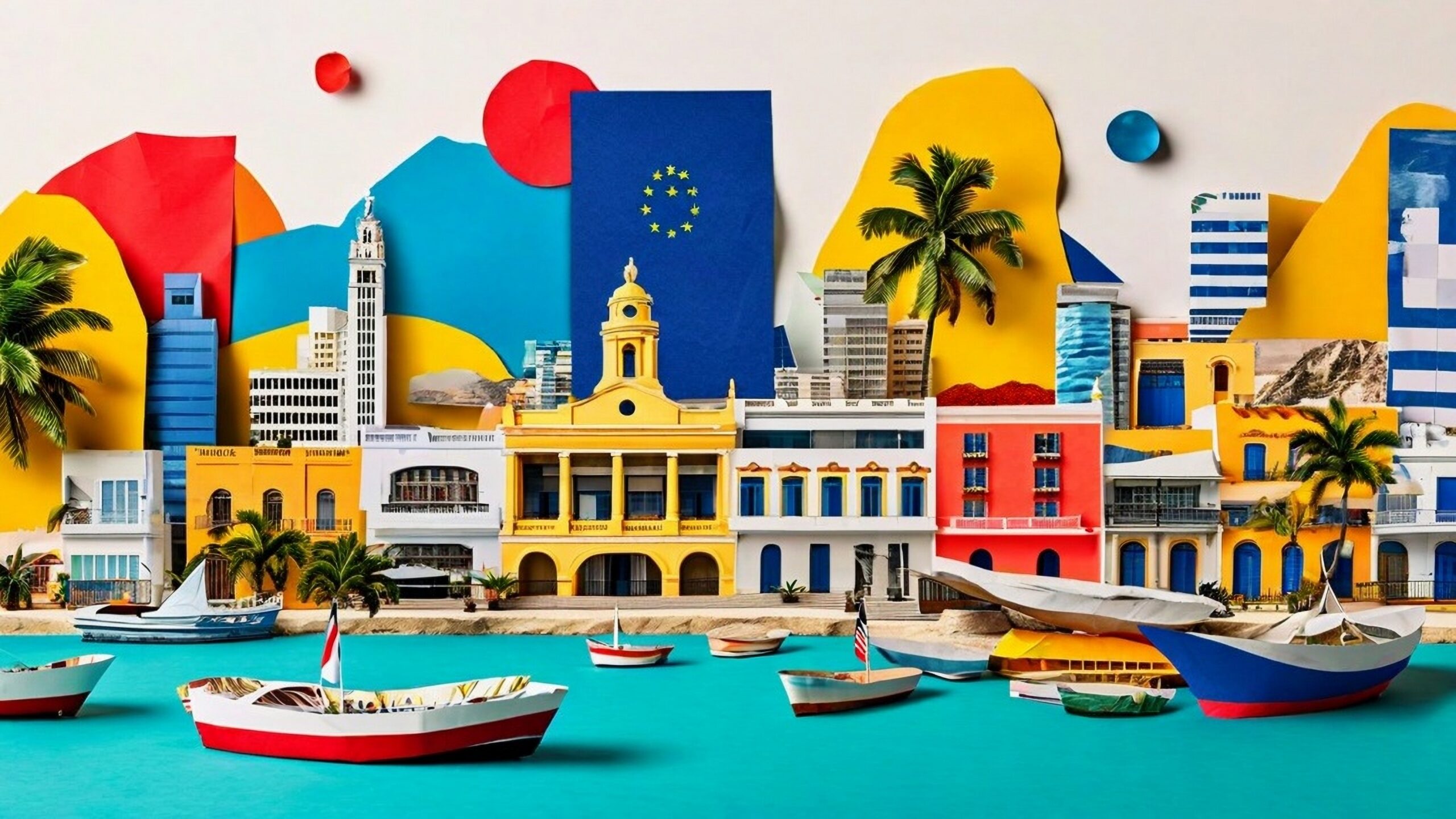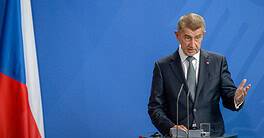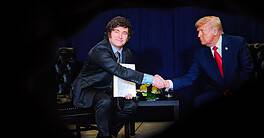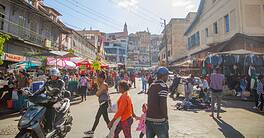Capitalizing on natural resources and a prime geographic location, the island nation considers a host of opportunities to expand exports and encourage foreign investment.
A cultural affinity with the United States and a year-round tropical climate have made the Dominican Republic an attractive destination for tourists from the north. But the number of visitors has trended downward and the new remittance tax in President Donald Trump’s “Big, Beautiful Bill” Act have highlighted the need for the island nation to accelerate its long march diversifying the economy.
“The Dominican economy has been diversifying since the fall of the Trujillo dictatorship” in 1961, points out Franklin Vásquez, economist and CEO of CYFRAS Consultores. “We’ve promoted and fostered financial capital, then we moved on to promoting tourism, then the free trade zones, then we opened the economy to early-1990s neoliberalism. Then we supported the agricultural sector.”
Currently, the focus is on services and creating a logistics hub, capitalizing on the republic’s proximity to the US and China’s interest in including it in the Belt and Road Initiative.
Foreign investors can take advantage of free trade zones, of which the Dominican Republic has 92, housing 850 companies. Logistics companies, which accounted for 3.14% of GDP in 2023, are treated the same way, tax-wise, as those that set up in the free trade zones. According to a recent report by the Ministry of Industry, Commerce, and Small Business (MICM), logistics’ slice of GDP could climb to 3.78% over the next decade. Five logistics centers and 33 companies combine for over $2 billion in revenue a year, or 1.58% of the country’s $126.2 billion GDP.
“With adequate policies, we should increase the complexity of our export basket.”
Juan Ariel Jiménez Núñez, former Economics Minister
Eduardo Sanz Lovatón, director general of customs, sees the Dominican Republic becoming the Caribbean’s most important logistics center. Besides its geographical position, Sanz points out that 20% of the country’s $4.5 billion foreign direct investment in 2024 was channelled into manufacturing. Companies including clothing manufacturers Hanes and Timberland, aerospace businesses like Eaton Corporation, and IT companies such as Rockwell Automation have established facilities on the island.
Challenges for companies considering relocation include scaling to provide for the fast-growing Asian market; education needs, especially for engineers; and occupancy rates in the country’s sophisticated business parks, which are running at 99% to 100%. But with a median worker’s age of 28, former Economics Minister Juan Ariel Jiménez Núñez sees a path to reindustrialization as well. That workforce is “willing to learn, willing to speak English,” he says. “I think we should try industrial goods: more medical devices and electrical components.”
That could help meet the challenge posed by Trump’s one percent remittance tax, which could cost the Dominican Republic more than $234 million per year, according to the Center for Global Development. Tourism accounts for 8.3% of GDP value-added; together with remittances, this increases to almost 30%.
“With adequate policies, we should increase the complexity of our export basket,” Former Minister of Industry and Commerce José del Castillo Saviñón argues. “We should do more tourism for sure, but we should do better tourism. We should do health tourism and retirement tourism. It’s not only diversifying away from tourism but also diversifying the tourism industry itself.”
The republic already has a tourism diversification policy in place, which is estimated to have added almost 104,000 tourists from South America this year. Tourist visits from Argentina have doubled since the signing of an open skies agreement in December 2024 that increased direct flights and included international promotion by the government. This has helped offset 88,000 fewer tourists arrivals from North America in the first quarter of 2025, which the Tourism Ministry explains as being due to seasonal factors including the leap year and early Holy Week celebrations.
Increasing the country’s presence in business service processing (BPO), which currently brings in $250 million per year according to Statistica, is another option. At least 14 BPO start-ups are currently operating in and around the capital of Santo Domingo, employing 36,000 call center workers. A report by the Banco Central de la República Dominicana calculates the industry has grown 12% annually for the past five years.
The DR’s Geographical Advantages
Another feature the republic could exploit is its northern port, Manzanillo, which is two days away by boat from the US eastern seaboard. At present, the country mainly uses its southern ports including, Haina and Santo Domingo. While the country continues developing a cruise-ship port in Arroyo Barril in the east, the northern coast remains underutilized.
Jiménez believes the Dominican Republic could also be the main supplier of agricultural and industrial goods to the Caribbean islands. Further afield, he argues for increased integration with the US and possibly Europe, but not Latin America, given that the US offers clearer competitive advantages.
Another option is energy diversification: in particular, nuclear energy.

In June, Gaddis Corporán Segura, vice minister of Nuclear Energy, revealed that a draft nuclear law is ready to be presented to the Chamber of Deputies. Should the republic go nuclear, it would be the first Caribbean Island to do so. Other, shorter-term measures could include a dosimetry calibration laboratory that could be used region wide. This would allow the Dominican Republic to calibrate instruments used in industry, medicine and research.
The Development Bank of Latin America and the Caribbean (CAF) has promised $2.5 billion of investment in the region to help improve the ocean economy. The CAF’s aims include preserving oceans, encouraging responsible tourism, managing the region’s coastlines, conserving and restoring marine ecosystems, developing clean technologies and renewable ocean energy, and decarbonizing ports and maritime transport. In June 2024, the Dominican Republic issued its first sovereign green bond for $750 million through the Ministry of Finance.
But despite “good relations” between the Dominican Republic and multilaterals in the region, Jiménez notes that timing will be a major issue, since discussing such projects can take longer than many of the region’s governments typically last. As a result, the Dominican Republic has had to rely more on sovereign bond issuance than multilateral loans.
Mining has always been one of the republic’s largest export industries. Last year, the sector contributed 43.3% of the country’s exports and 1.4% of GDP. China is a leading export market and experts believe that along with gold—which Barrick Gold has successfully exploited—copper, zinc, bauxite, silver, and precious metal wastes present significant growth opportunities. The southeast of the country, especially, could benefit from new exploration grants from the government: including, says Vasquez, for oil.
Perhaps the republic’s most significant recent economic trend, however, has been the rapid increase in women joining the workforce.
“I believe women have been the greatest beneficiaries of the labor market and economic dynamics,” Vásquez says. “Before, you could have had a labor market that was 20% to 30% female; now, we see that 50% of the labor market is female. If you look at the financial system, the majority of bank and financial institution employees are women. Dominican women have empowered themselves and trained themselves. They have wanted to move forward.”
The larger issue, however, is what types of work women are securing. Assistance from a World Bank program aims to redress an imbalance that sees only 18% of female students choose information and communication technology and women making up only 5% of STEM graduates.
Nevertheless, greater economic participation by women has contributed to improved social stability in a country that already has economic and political solidity, according to Vásquez. A plethora of laws and policies aim to limit public spending and increase access to financial services, potentially broadening the tax base.
Given these attributes, “the Dominican Republic is the diamond in Latin America,” Jiménez says. “With adequate policies, especially with a better education system, we can shine that diamond quite a lot.”




